19 Images
Objects in this “collection” are vast and varied, and with no provenance little can be learned from them. This is often a deliberate choice made by looters and curatorial staff to erase the “paper-trail” that points to an object’s illegal removal from its home country. This practice is detrimental to academic and communal efforts to learn from objects and reconnect them with those for whom they carry cultural significance and heritage. Without information about when, or where, our fragments were taken from, the work to repatriate them becomes exponentially harder (by design).
We actively avoided imposing typical categories on these objects. Being non-expert outsiders, we felt that our role was to preserve the fragments, not to attempt to take knowledge from them, or make assumptions about their purpose. What is archaeologically “intuitive” for us as modern scholars in a traditional academic setting is often a product of an education that is steeped in colonialism. Thus, we kept our classifications to the most basic possible. Some objects, for example, are likely fragments of lidded vessels:
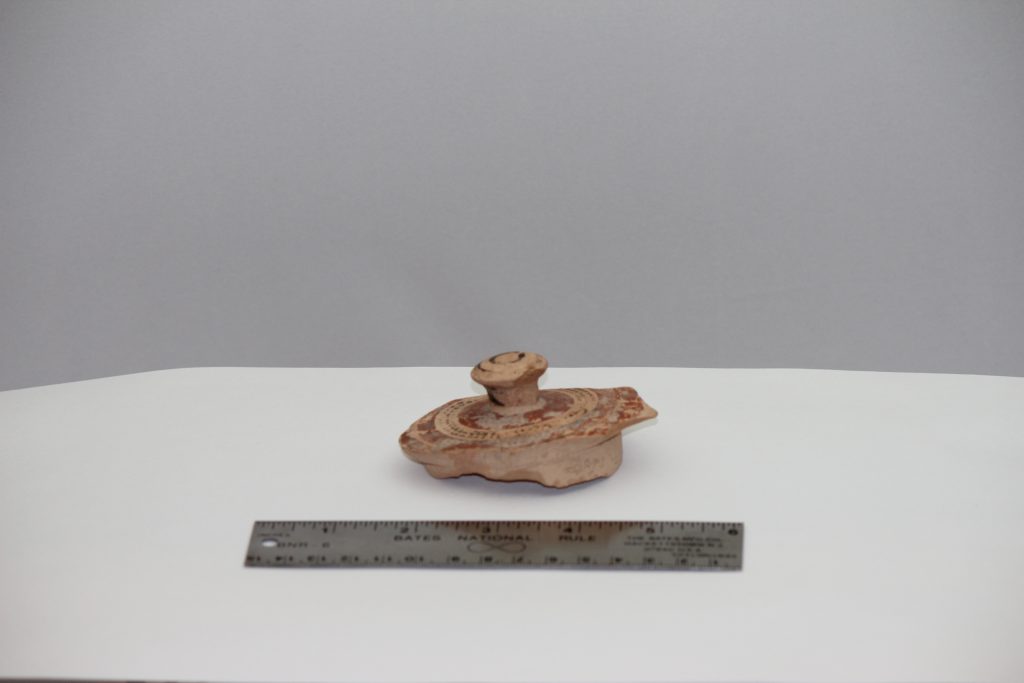
Some fragments have decorative, painted motifs:
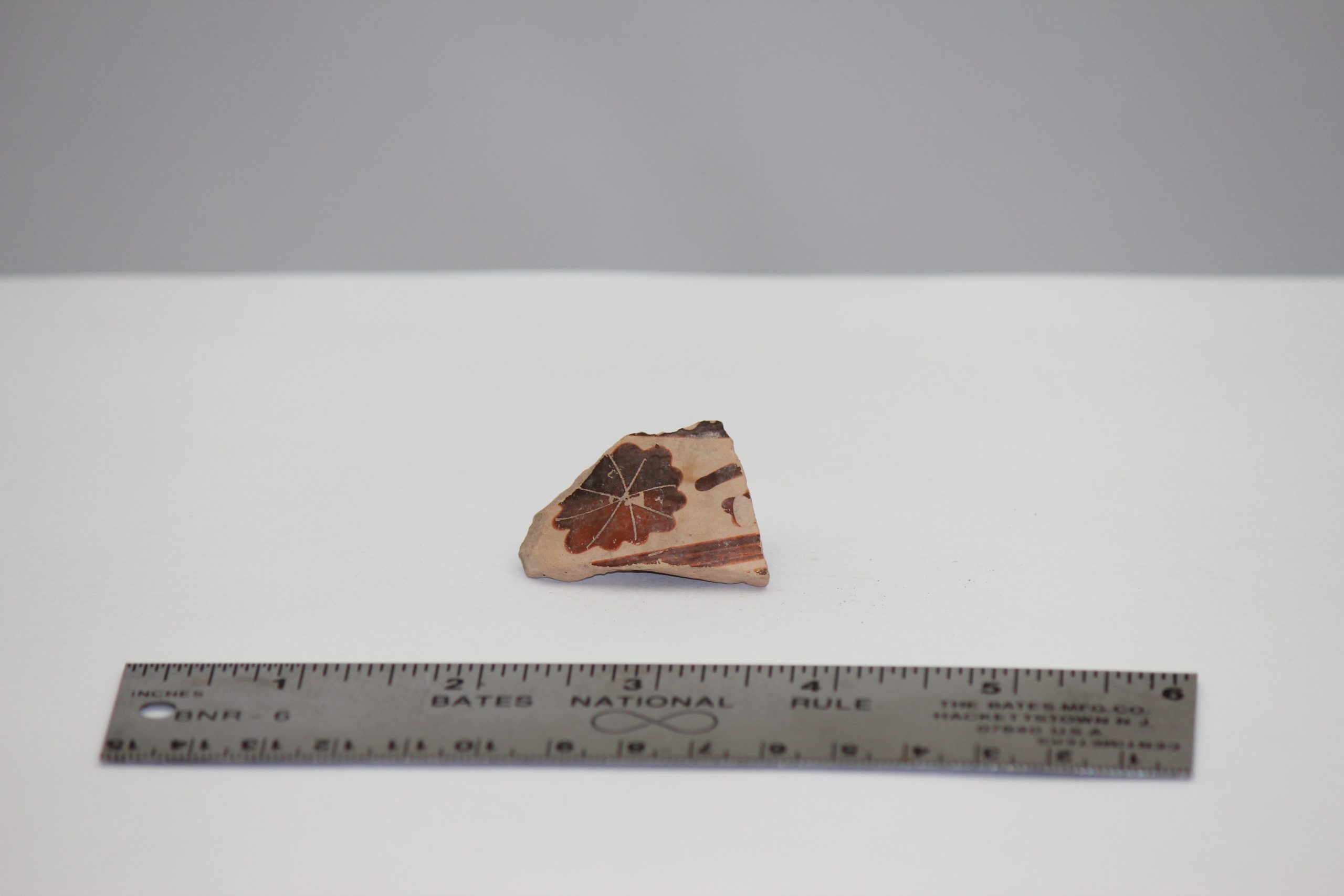
Others like objects 43 and 66, we can tentatively identify by their practical purpose. These are likely spindle whorls, used to spin fiber into a usable thread for textile-working:
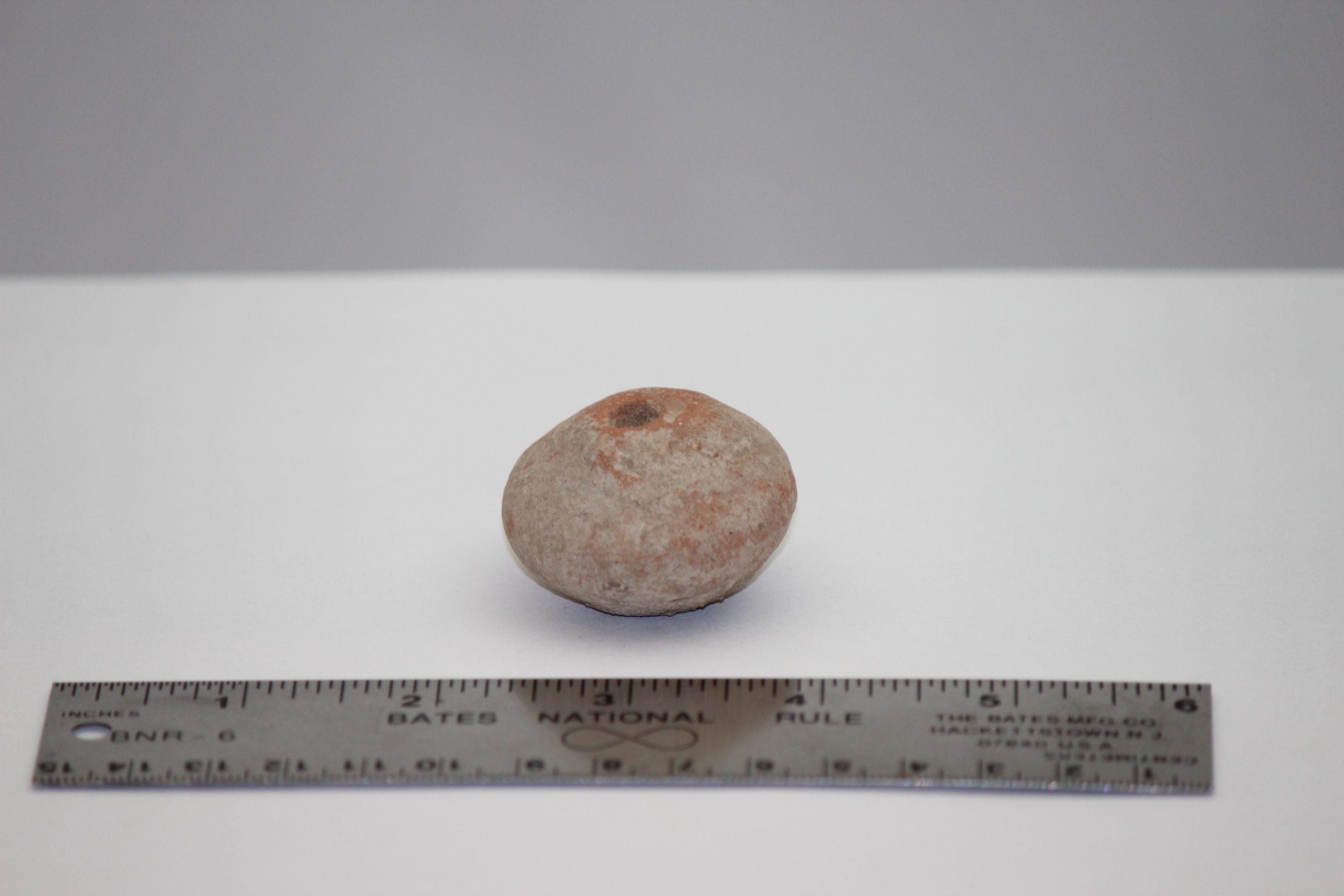
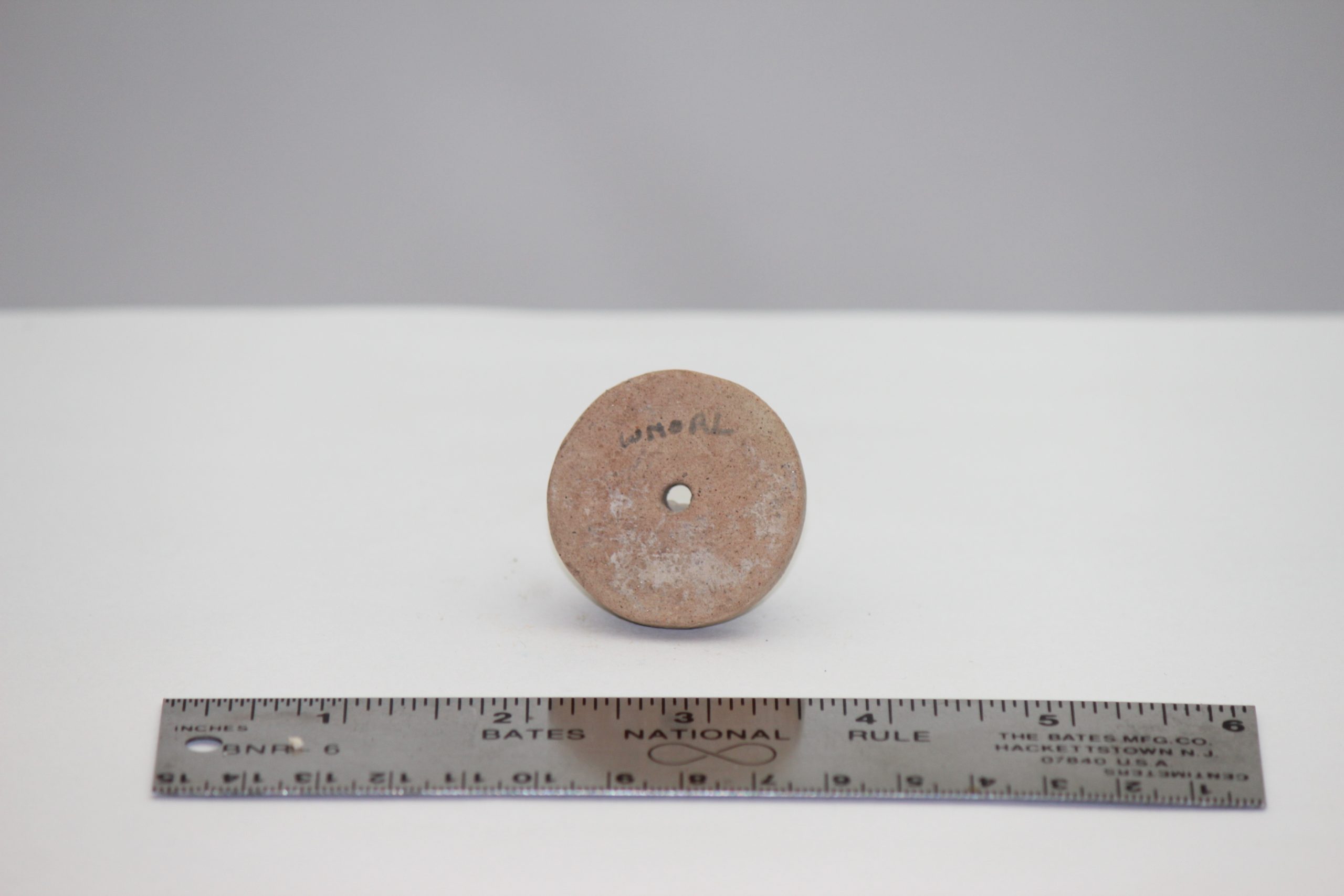
Some fragments (objects 6, 11, 13, 37, 43, 44, 47, 49, 56, 72, 75, 78, 79, 82, 83, 86, 100, 110, 129) have been written on. Whether this indicates the location where they were originally found, purchased, or speculations about their origins, we will never be able to truly know.
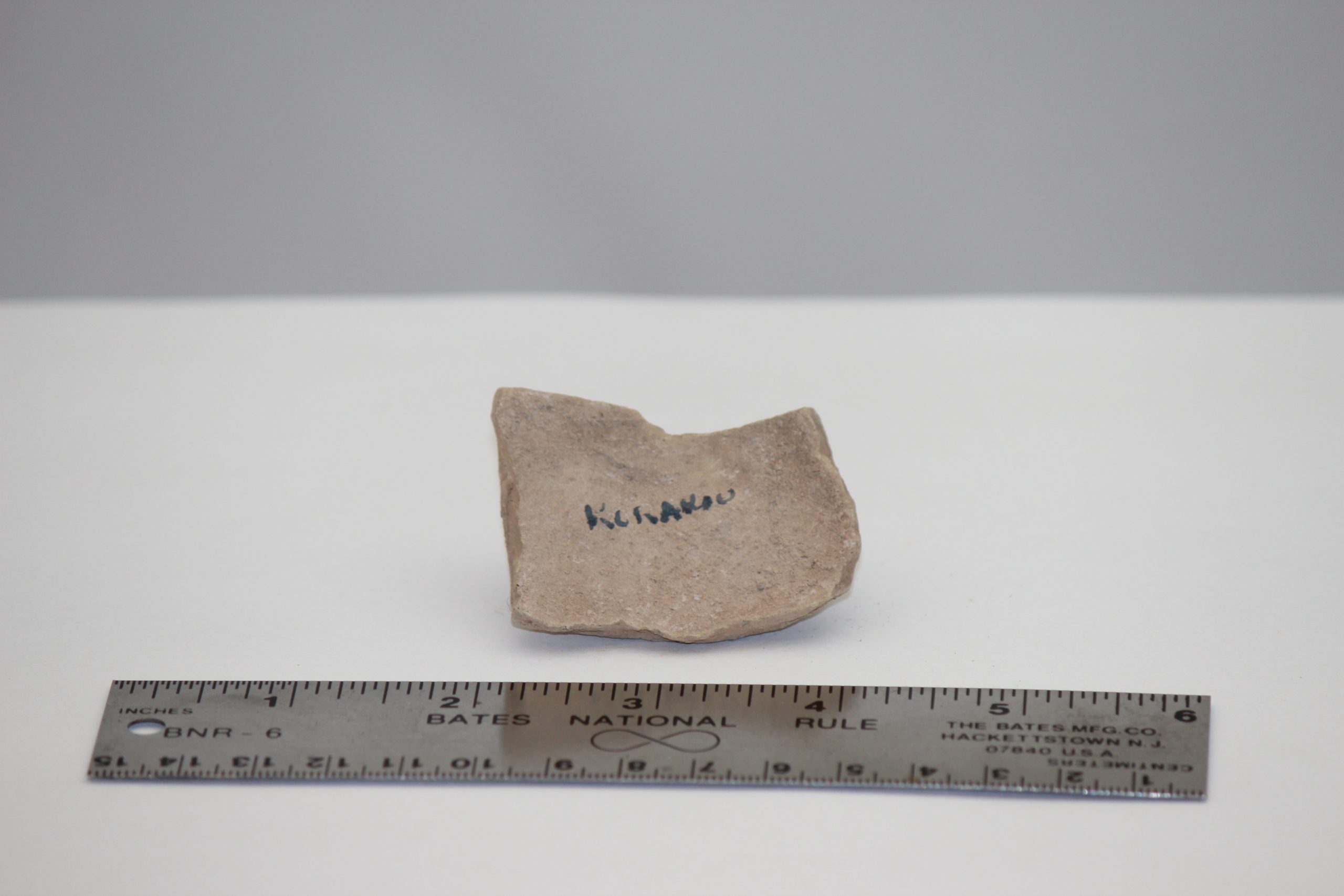
What we can say with certainty is that these objects have spent the later part of their lives encased in a basement storage closet, inside a repurposed drawer, alongside the flotsam and jetsam of a 20th century administrative office:
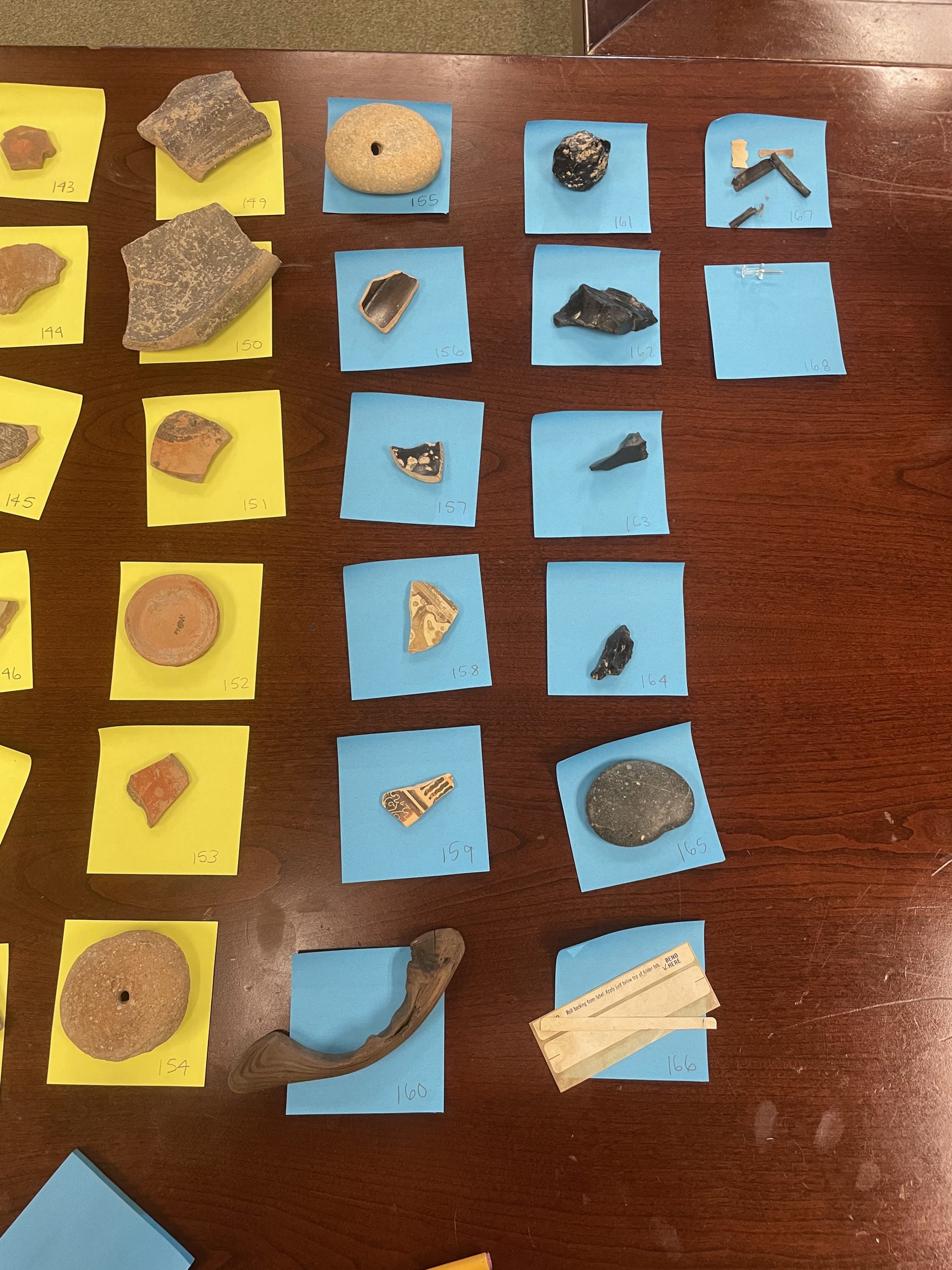
The following links will take you to our photos. We have sorted them into categories based on physical attributes. Due to the lack of provenance, we are unwilling to make too many assumptions about their historical contexts.

